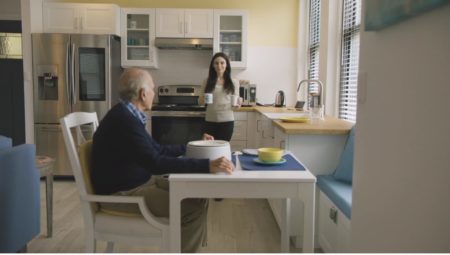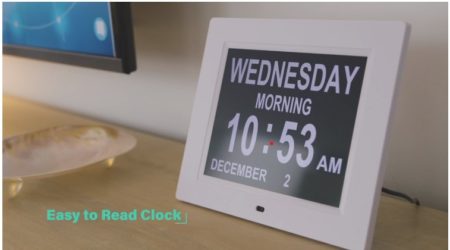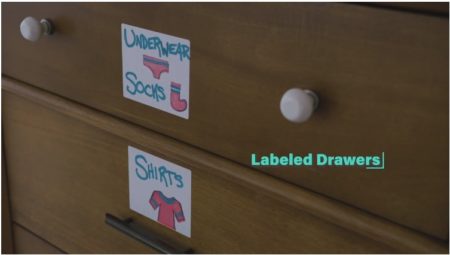The Alzheimer’s Foundation of America (AFA) created The Apartment, a model studio residence built in AFA’s New York City headquarters, to showcase ways that practical design and technology can increase the quality of life for someone living with dementia and help family care partners protect their loved ones’ safety.  (Text from AFA website)
(Text from AFA website)
While many families may not be able to afford a New York apartment on the 16th floor nor the Samsung Family Hub smart refrigerator with a large-display touch screen on the door, they will benefit from several of the smart ideas featured in the CBS New York interview (see video below). Consider telephones available with programmable numbers and easy-to-recognize family members’ and friends’ pictures.
Included is a mix of high-tech (Philips Hue Smart Circadian Lighting System to mimic day-night) and older tech (soothing and calming colors on the walls, floors, and furniture; labeled drawers, easy-to-read clock).

The items in this thoughtfully designed apartment give families ideas of what to include to help make their aging loved ones’ lives a little easier.
While remotes can be complicated enough to require a PhD, the branded Simpl Remotes featured in The Apartment are intuitive.
The ergonomically designed handles on cups and Oxo Good Grip utensils make it easier to grasp with arthritic fingers. The Kinsman Weighted Utensils make eating less stressful for those with Parkinson’s tremors. Glass-front cupboard doors help those with moderate dementia to see what’s inside.

While some of these technologies may seem to be out-of-reach, they grow surprisingly affordable after you add the cost of in-home care to the emotional, mental, and physical toll on the family caregiver. Caregivers who choose to survive and thrive will consider the smart technologies that enhance their loved one’s independence—technologies that monitor falls and medication adherence, including monitoring if one has wandered out the front door and not returned.
If the AFA is willing to accommodate a family, the next step is to invite a person with dementia to stay in The Apartment for two weeks. In return, the family would allow researchers to observe and report further on the real-life application of these design elements. After needed modifications, a second volunteer could move in who lives with a greater or lesser degree of dementia. Families would need to represent key demographic variables such as age, geographic location, type and degree of dementia of the more than six million who currently live with dementia in the U.S.
Watch CBS New York’s brief interview and tour of The Apartment with AFA’s President Charles J. Fuschillo, Jr.
For more information click on—
https://alzfdn.org/TheApartment/
https://alzfdn.org/wp-content/uploads/2021/03/The-Apartment-Guide-web.pdf








